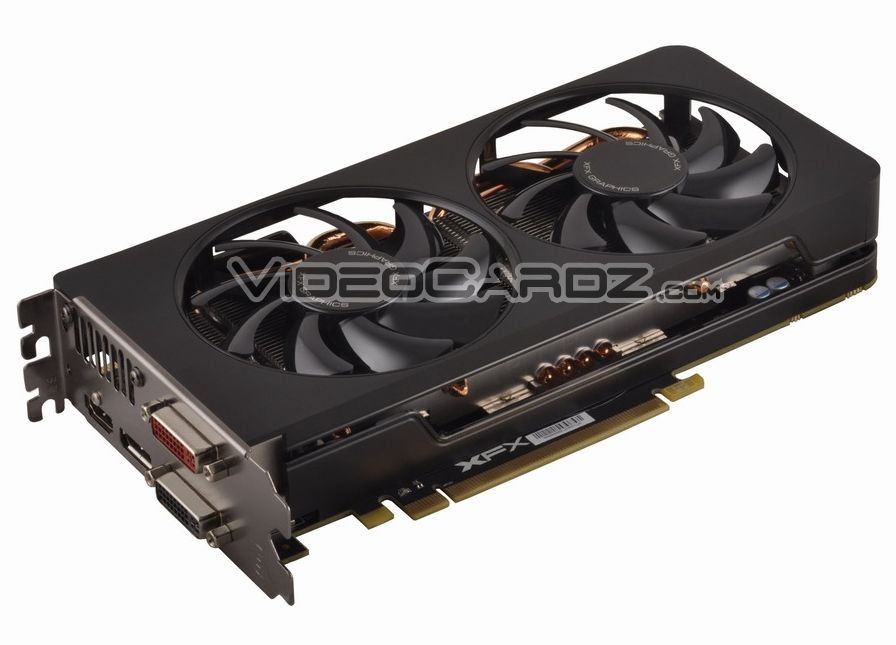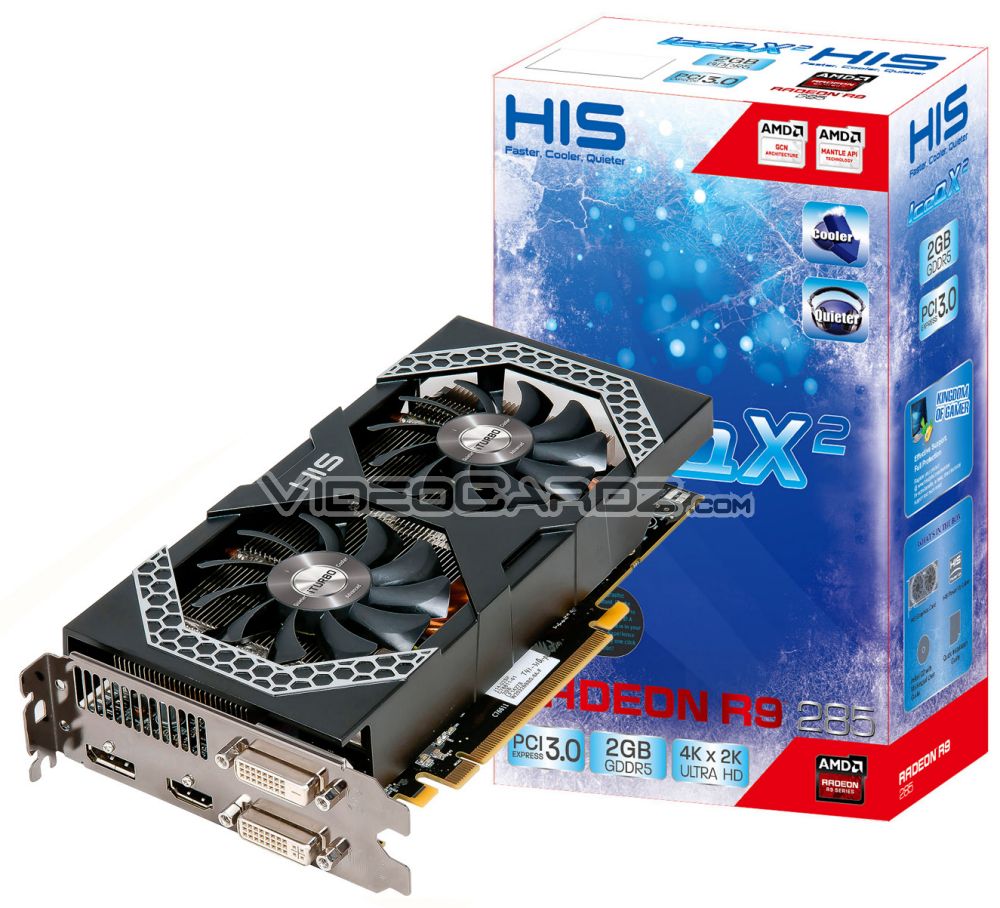Pictured: AMD's new Radeon R9 285
A report is online with pictures of graphics cards with the new AMD Tonga GPU; they look like ordinary graphics cards.
You might remember when there was the first word about the new AMD Tonga GPU, and that at the time, the rumors were everywhere. There was talk of it being a chip for an efficient mid-tier graphics card as well as it being a new flagship chip. Now, VideoCardz.com has released pictures of various Radeon R9 285 graphics cards, which it claims carry the Tonga Pro GPU.
Performance for these cards is expected to sit at around the same level as the R9 280. It remains unknown how many cores the Tonga Pro has, but VideoCardz.com expects it to have a clock speed of 918 MHz. From the box images, we can see that the memory aboard the cards adds up to 2 GB of GDDR5 memory, which we suspect will run over a 256-bit memory interface at an effective frequency of 5.5 GHz. Power delivery to the graphics card is taken care of by two 6-pin PCI-Express power connectors.
Also expected to arrive later down the line is the R9 285X, which will supposedly carry the Tonga XT GPU and its 2,048 cores.
The R9 285 with the Tonga Pro chip is expected to arrive this month, though pricing remains unknown. Stay tuned for more. In the meantime, enjoy the images provided by VideoCardz.com. Note: This is still a rumor, so the specifications may not be correct.
Follow Niels Broekhuijsen @NBroekhuijsen. Follow us @tomshardware, on Facebook and on Google+.
Get Tom's Hardware's best news and in-depth reviews, straight to your inbox.
Niels Broekhuijsen is a Contributing Writer for Tom's Hardware US. He reviews cases, water cooling and pc builds.
-
Treynolds416 Glad they're not going to name it the same as the current 280. As for tonga, I wonder what its purpose is? Is it a more power efficient gpu to try to compete with maxwell, or is it closer to a more scalable hawaii architecture.Reply -
Zeroplanetz Not interested because it seems like there still not trying for 4k gaming at affordable prices for most.Reply -
RedJaron Reply
Depends on the memory interface and use. The 280 had 3GB VRAM because it had a 384-bit memory bus. That put 1GB on each 128-bit controller. By similar rights, the 512-bit 290 had 4GB. If this is a 256-bit card, then it makes sense to be a 2GB card.13935462 said:Why would a card sitting between the 3GB 280x and 4GB 290 have 2GB of VRAM? -
childofthekorn ReplyGlad they're not going to name it the same as the current 280. As for tonga, I wonder what its purpose is? Is it a more power efficient gpu to try to compete with maxwell, or is it closer to a more scalable hawaii architecture.
From the rumor mill its apparently focused on being more energy efficient than performance. -
childofthekorn ReplyNot interested because it seems like there still not trying for 4k gaming at affordable prices for most.
Affordable pricing including displays and cabling. 4k gaming still has awhile before its the standard/mainstream and will be much more resource intensive. -
BleedingEdgeTek Reply13935571 said:
Depends on the memory interface and use. The 280 had 3GB VRAM because it had a 384-bit memory bus. That put 1GB on each 128-bit controller. By similar rights, the 512-bit 290 had 4GB. If this is a 256-bit card, then it makes sense to be a 2GB card.13935462 said:Why would a card sitting between the 3GB 280x and 4GB 290 have 2GB of VRAM?
That makes sense, but my problem is why is not the 275 then? The 265 is faster than the 260x, so why would the 285 be slower than the 280x? Just makes no sense how they would name it lol -
RedJaron Reply
We don't know if it will be faster or slower than the 280 yet. Remember most of the Rx 200 cards right now are just rebranded 7000 cards with some slight clock tweaks. Aside from Hawai'i on the 290 cards, we haven't seen new Radeon architecture for two years now. It's quite possible the Tonga can operate faster on a 256-bit bus than the 7970 does on its 384-bit bus. Or it might simply be a matter of getting nearly the same performance but on significantly less power ( this only shows two 6-pin cables, not the usual 6/8 pairing on 280 cards. )13935881 said:That makes sense, but my problem is why is not the 275 then? The 265 is faster than the 260x, so why would the 285 be slower than the 280x? Just makes no sense how they would name it lol
Now if the 285 performs notably worse than the 280, then I agree the name will be very confusing. -
DarkSable ReplyThat makes sense, but my problem is why is not the 275 then? The 265 is faster than the 260x, so why would the 285 be slower than the 280x? Just makes no sense how they would name it lol
Because you have no way of presuming that it's a slower card in any way, shape, or form.
It could very well be quite a bit faster - the amount of VRAM has little to no effect unless it becomes a bottleneck. (And in fact, cards with larger quantities of VRAM are slower when compared to the exact same card with less VRAM, again as long as it's not so low as to be a bottleneck.) -
InvalidError Reply
Considering how 4k is giving even a crossfire/SLI pair of high-end current GPUs a hard time, I would not expect mainstream-priced single-GPU solutions for 4k until 16nm GPUs come around, which puts them at about two years out from now, maybe three.13935550 said:Not interested because it seems like there still not trying for 4k gaming at affordable prices for most.



